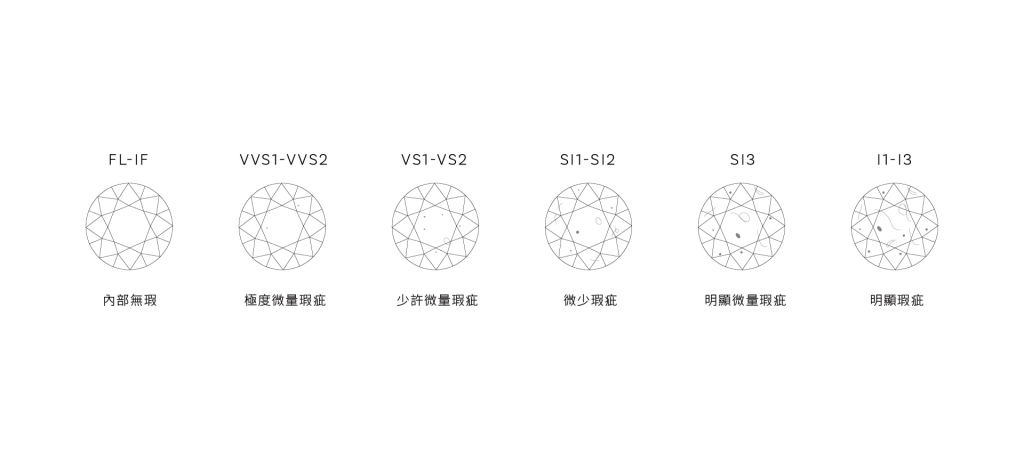Flawless Diamonds
Not Visible under 10X magnification
There is no higher diamond clarity than that of a flawless diamond. When viewed under a 10x power magnification by a gemologist, flawless and internally flawless diamonds have no visible internal inclusions. These stones are the rarest of rare.
These diamonds have a high barrier of entry in terms of cost. Many people find that a better option is to compromise on the clarity for a better size or level of diamond color . This can help save money, while still providing an exceptional diamond.
VVS Diamond Clarity
Very difficult to see under 10X Magnification
The VVS classification is broken into two categories: VVS1 and VVS2. The suffix of 1 denotes that a VVS1 scores higher than VVS2. The numeric designation added to the clarity grade relates to either the quantity, shape, or type of inclusion in the diamond. Inclusions in VVS stones are not easy to detect for the average person, even under 10X magnification. As is the case with flawless stones, most people will find the VVS stones prohibitive in cost, and choose to either save money or use their allocated money toward improved diamond cut, size, and/or color.
VS Diamond Clarity
Moderately visible under 10X Magnification
Once again, the VS classification is broken into two categories; VS-1 and VS-2, with VS1 being the better of the two grades. When viewing a 10X magnification the average person can see inclusions in a VS stone with the help of a jeweler’s eye. VS diamonds are very practical because they are flawless to the naked eye, and the diamond pricing is lower than the higher grades.
SI Diamond Clarity
The SI clarity rating is also broken into two categories: SI-1 and SI-2. There are some jewelers and laboratories that acknowledge the classification “SI-3”, but this classification is not accepted by the Gemological Institute of America-GIA.
The SI1 classification is a little more difficult to navigate. Stones smaller than 1 carat and at the high end of this class are typically flawless to the naked eye. When mounted in jewelry, SI1 diamonds of up to 1.5 carats in size can be pleasing with inclusions that are not noticeable to the average person. SI2 stones can contain flaws, that although slightly noticeable under close scrutiny as loose diamonds , may be attractive when mounted in jewelry. Some stones in the SI2 clarity range look better to the eye than others. This can be very subjective, and you should examine stones in this class very carefully before deciding on this grade.
Stones that are classified “SI3” are typically stones that would otherwise be classified I1 by GIA standards, but are above average in their class. SI-3 stones typically exhibit characteristics or flaws that are visible to the naked eye.
The type and location of flaws in these stones have a lot to do with their appeal; therefore, they can vary greatly in value. SI diamonds, when carefully selected, can provide an optimal look at a significantly lower cost than high-clarity diamonds.
I Diamond Clarity
“I” Clarity is broken into three categories: I-1, I-2, and I-3. At the top end of the scale, I1 diamonds have visible inclusions to the naked eye. At the low end of the scale, I3 diamonds have inclusions that are visible from across the room. The primary reason stones in this class are purchased is because they can offer “Big for Less.” I clarity diamonds trade at significant discounts from gem grades. Be careful of this enticement. After their purchase, some people become disenchanted with the clarity of the stone and regret their purchase over time.

